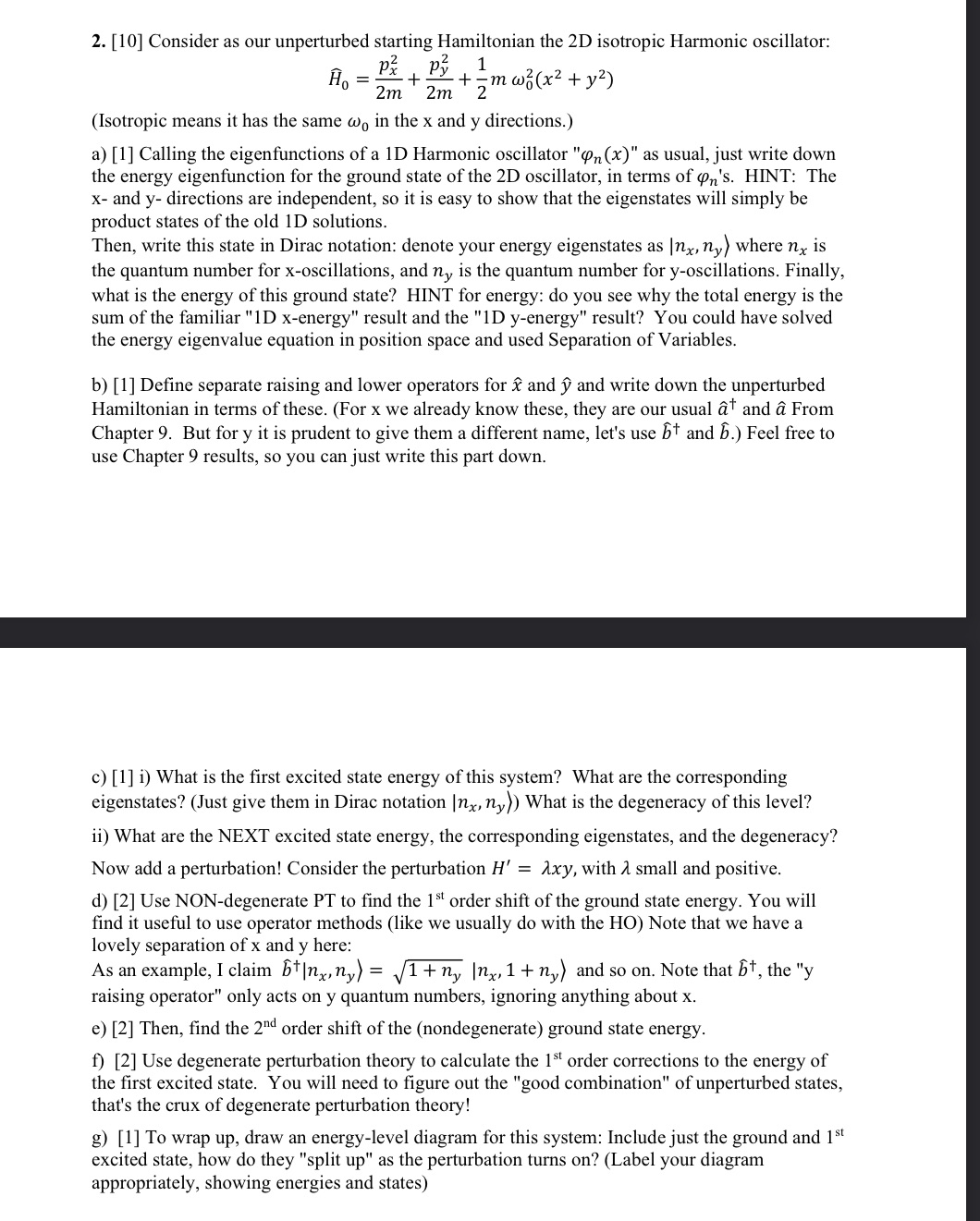Please answer the whole question
2. [10] Consider as our unperturbed starting Hamiltonian the 2D isotropic Harmonic oscillator: 2 2 " px p)? 1 2 2 2 H =++mw x + a 2m 2m 2 at Y) (Isotropic means it has the same can in the x and y directions.) a) [1] Calling the eigenfunctions of a 1D Harmonic oscillator "(30,, (x)" as usual, just write down the energy eigenfunction for the ground state of the 2D oscillator, in terms of gon's. HINT: The x- and y- directions are independent, so it is easy to show that the eigenstates will simply be product states of the old 1D solutions. Then, write this state in Dirac notation: denote your energy eigenstates as |nx, 113,) where 71,, is the quantum number for x-oscillations, and n), is the quantum number for y-oscillations. Finally, what is the energy of this ground state? HINT for energy: do you see why the total energy is the sum of the familiar "1D x-energy" result and the \" 1D y-energy" result? You could have solved the energy eigenvalue equation in position space and used Separation of Variables. b) [1] Dene separate raising and lower operators for f and y and write down the unperturbed Hamiltonian in terms of these. (For x we already know these, they are our usual at and a From Chapter 9. But for y it is prudent to give them a different name, let's use 51 and 5.) Feel free to use Chapter 9 results, so you can just write this part down. c) [1] i) What is the rst excited state energy of this system? What are the corresponding eigenstates? (Just give them in Dirac notation |nx, ny)) What is the degeneracy of this level? ii) What are the NEXT excited state energy, the corresponding eigenstates, and the degeneracy? Now add a perturbation! Consider the perturbation H ' = lxy, with A small and positive. d) [2] Use NON-degenerate PT to fmd the 1st order shift of the ground state energy. You will find it useful to use operator methods (like we usually do with the H0) Note that we have a lovely separation of x and y here: As an example, I claim Elwyn = J1 + in}. |nx, 1 + y) and so on. Note that 5*, the "y raising operator" only acts on y quantum numbers, ignoring anything about x. e) [2] Then, find the 2nd order shift of the (nondegenerate) ground state energy. 0 [2] Use degenerate perturbation theory to calculate the 151 order corrections to the energy of the first excited state. You will need to figure out the " good combination" of unperturbed states, that's the crux of degenerate perturbation theory! g) [1] To wrap up, draw an energy-level diagram for this system: Include just the ground and 181 excited state, how do they "split up" as the perturbation turns on? (Label your diagram appropriately, showing energies and states)







